- September 13, 2020
- Posted by: CoachMike
- Categories: Options Trading, Trading Article

“Is it possible to trade the same 2 or 3 stocks every week to make a consistent income trading options?
“If you could pick just one market to trade for the rest of your career what would it be?”
I was asked these two questions last week from a newer trader getting started with their options trading. They are intriguing questions as the thought of looking at the same 2 or 3 stocks every week would save on time and make life much easier for all traders.
Correlation Has Changed The Landscape
If I were answering these questions 5 years ago, I would say it was possible and I would have focused on SPY, AAPL, and JPM.
The problem with this scenario in 2020 is markets have changed. Trading those 3 stocks do not give enough diversification necessary to produce consistent returns.
Why is that the case?
There is too much correlation between these markets.
SPY is the ETF that tracks the S&P 500. In theory, you would think this is a broad-based index that gives instant diversification into many areas of the market since it is tracking 500 stocks. In reality, it doesn’t give you as much diversification as you would think due to a few big tech stocks (including Apple) having such a big impact on the performance of the ETF.
This is why it’s so important to get to know the ETF’s that you plan on trading on a regular basis.
With this in mind, we are going to take a closer look at SPY so we can trade this ETF with more confidence. SPY is one of the most liquid markets in the world on a daily basis. The volume and open interest in the options make it a great candidate for so many options strategies.
In my opinion it should a part of every trader’s watch list.
Important SPY Data You Should Know
Overview: SPDR S&P 500 (Symbol: SPY). The SPDR S&P 500 is and ETF (Exchange Traded Fund) that tracks the performance of the S&P 500 index. SPDR stands for the Standard & Poor’s Depository Receipts.
It trades on the NYSE Arca.
While some traders like to trade options on the SPX which is the S&P 500 cash index, we prefer to trade SPY as the ETF is much cheaper and easier to trade for retail traders. SPY is 1/10 the size of SPX which makes the options much less expensive as well.
Performance: SPY does provide a good snapshot for overall market performance. The ETF is down -.50% over the last month. It is up 5% over the last 3 months and up just under 5% year to date. It is up just over 14% over the last year and up just under 13% over the last 3 years. While not as volatile as the individual stocks, it can produce good movement back and forth which is ideal for options traders.
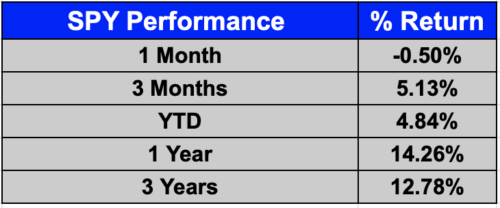
Components: SPY does track the performance of 500 individual stocks in different areas of the market. However, it is a market-cap weighted index comprised of different large and midcap stocks. In other words, each of the 500 stocks in the index are not evenly weighted. This is why it’s important to know which sectors and stocks have the biggest impact on the performance of the ETF.
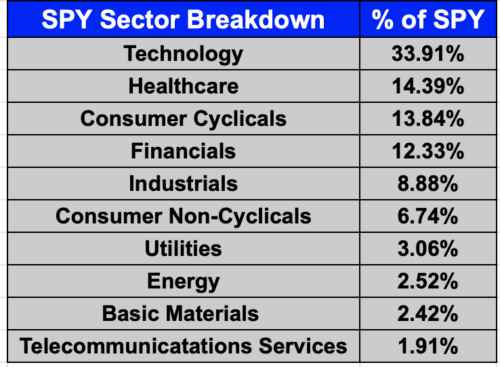
As you can see from the screenshot below, the top 6 stocks that have the biggest impact on the movement of the ETF are all tech stocks.
While you might get into a trade on SPY thinking it will provide really great diversification, 34% of the index is in the tech sector. While you will find other sectors represented like the Financial sector which make up 12.33% of the index and the Industrials 8.88% they don’t have near the impact that the tech sector does.

You don’t want to create a small watch list of stocks that focuses strictly on Apple, Microsoft, Amazon, Facebook, and SPY as they are all very correlated. You might has well just pick 1 or 2 of them instead of trading all of them.
Liquidity: SPY is one the most liquid markets in the world on a daily basis. Pull up any scan that looks for the stocks or ETF’s that have the most volume on a daily basis and you will typically find SPY in the stop spot.
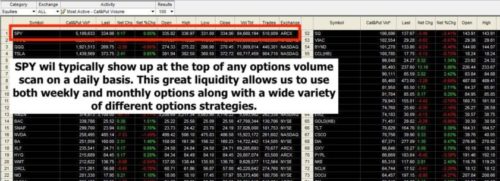
Looking at the 50 day moving average of the volume on SPY it typically trades 65,680,948 shares on a daily basis. While we prefer to trade the options instead, the good volume in the shares of stock will also translate to good volume in the options as well. The bigger the volume the easier it is to get in and out of trades quickly and at good prices.
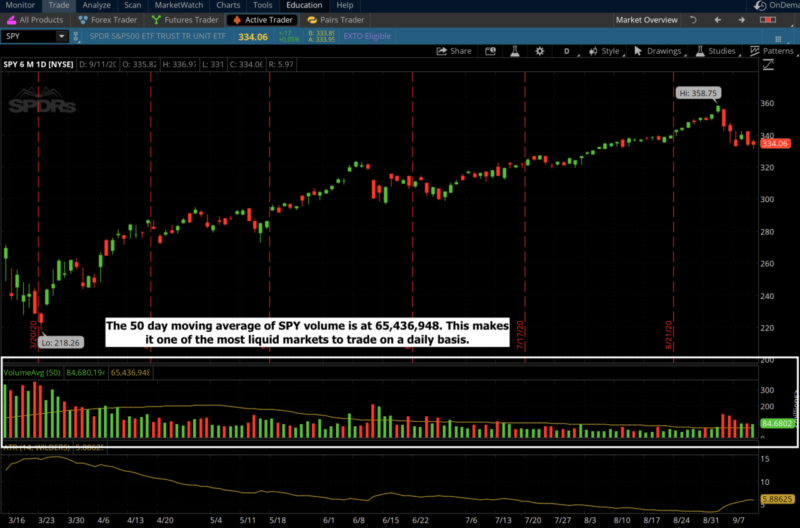
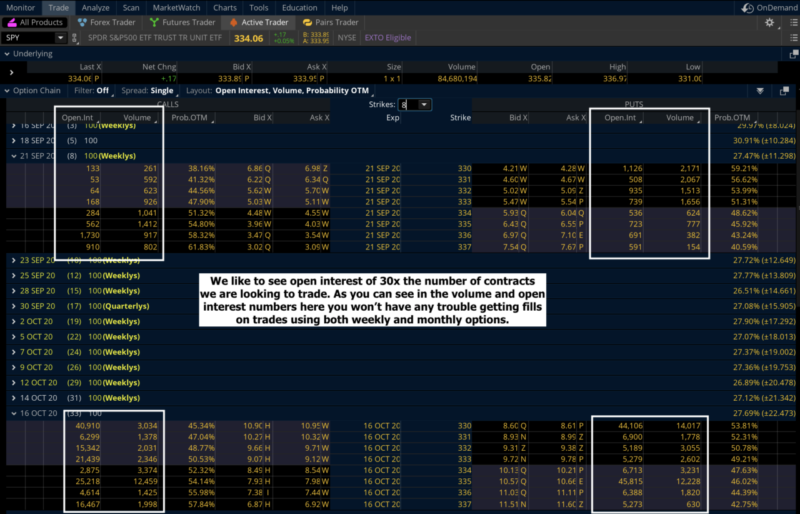
The big volume will also mean tighter bid/ask spreads in the options which makes it much easier to use a wider variety of options strategies.
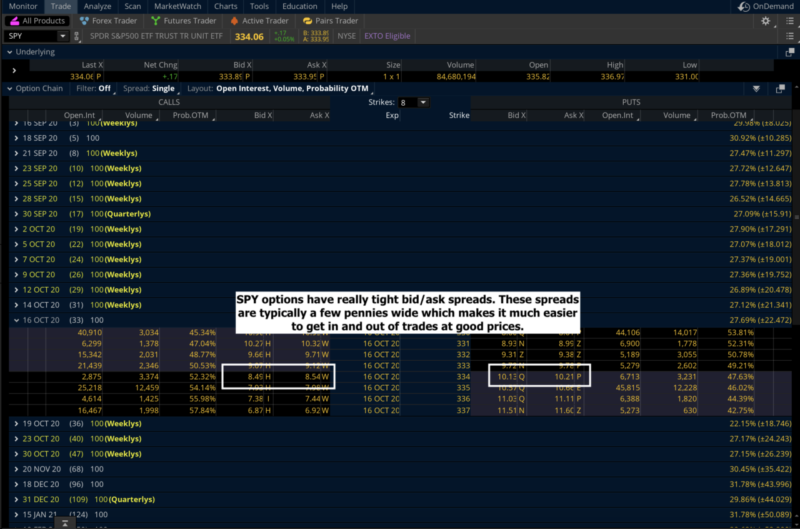
Best Options Strategies To Use: The best part about trading SPY is the ability to use so many different types of options trades. We can use both weekly and monthly options as both have really great volume and option interest.
We can also use any type of options strategy as well including long calls and puts, debit spreads, and credit spreads.
Below you will see a screenshot showing our preferred options strategies depending on how aggressive our outlook is.
While I like to use both weekly and monthly options, our sweet spot is to look for between 20-40 days left to expiration on the options the we are trading.

Conclusion
SPY is one of our favourite markets to trade on a weekly basis. It’s rare that we don’t have at least a few different SPY options trades on at any one time. While it’s a great product to trade, it’s important to make sure aren’t overloaded with tech stocks in the rest of our watch list.
With so many big tech stocks having such a big impact on the performance of the index products these days, we want to make sure we have exposure to other sectors of the market. This way we get the diversification necessary to produce consistent returns over time.
1 Comment
Comments are closed.

Thank u so much I’m traded options 4times and invidual stock quite a bit I gain more on options but never traded options with ETF thank u for the pointers